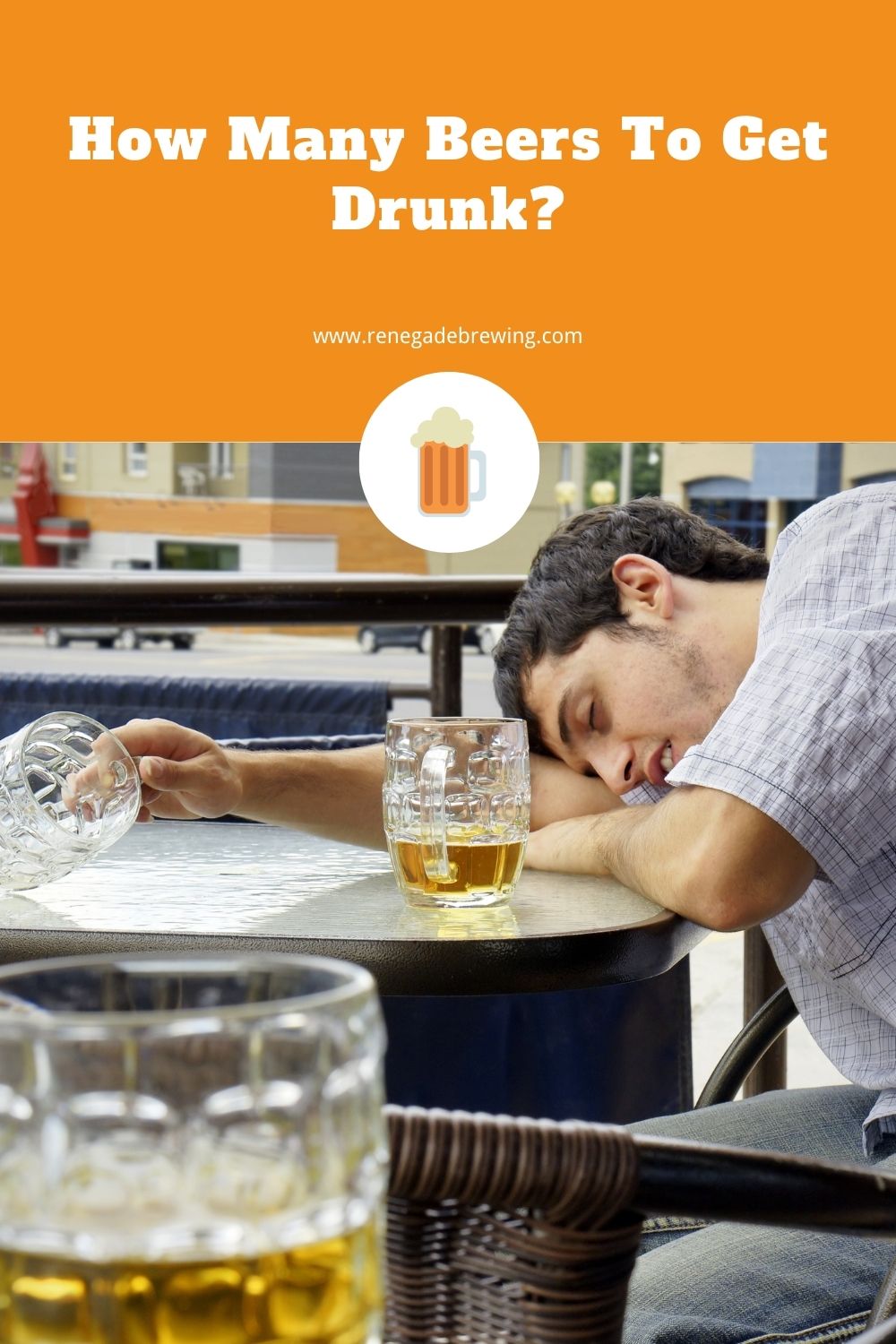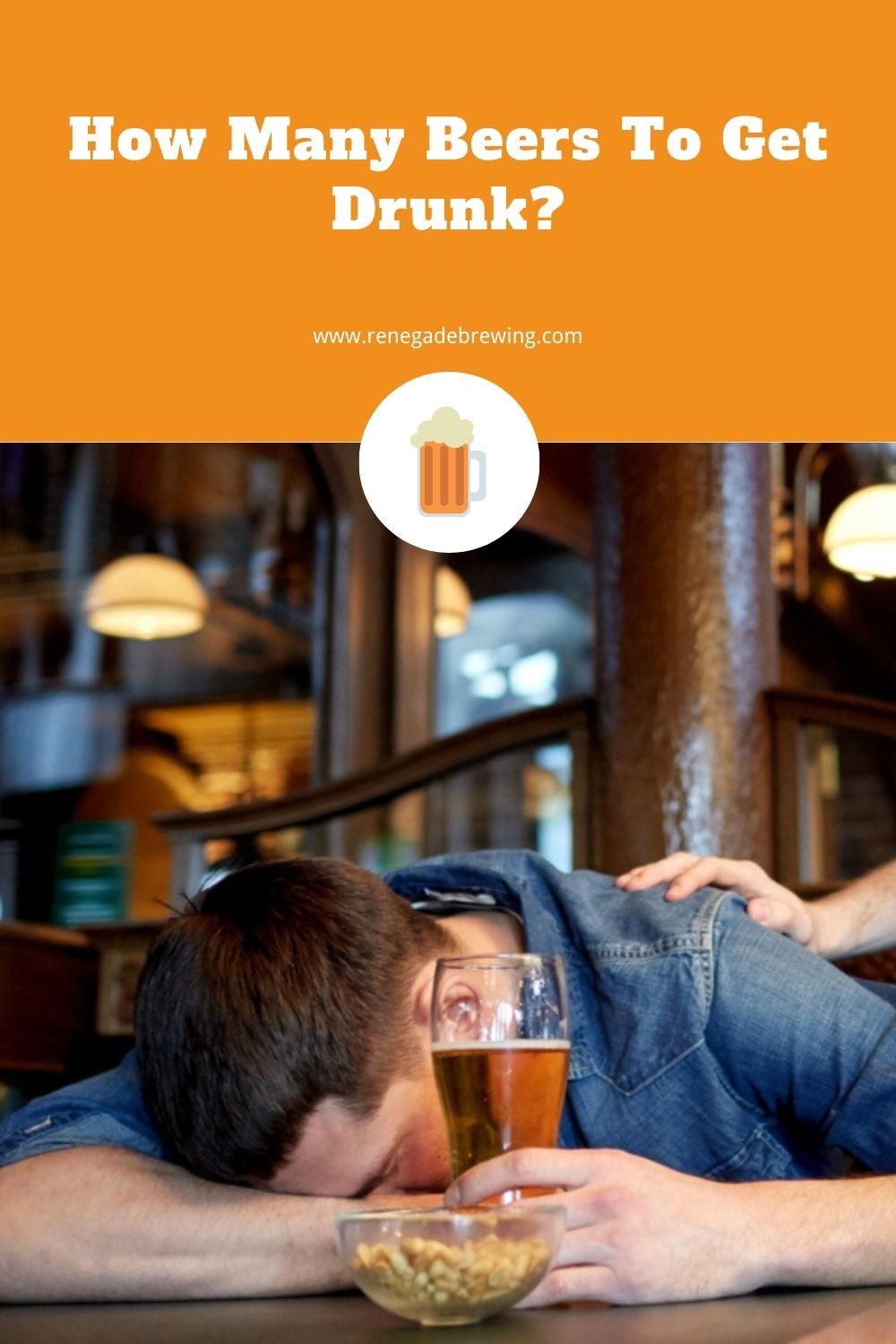How Much Alcohol Do You Need To Get Drunk
Some people get drunk on one beer, and some enjoy it all their lives without getting drunk. Keep in mind that severe drunkenness leads to alcoholism, and it may have serious health consequences.

On the other hand, a small quantity of beer is beneficial for your health and can help you relax. Naturally, you can wonder what the right measure is and how many beers to get drunk. Well, the answer depends on several things.
Your Body Type
Drunkenness is a subjective experience. Two people who drink the same type of beer in identical amounts will have entirely different reactions. How fast you get drunk depends on the attributes of your body.
Weight
The more you weigh, the more beer you need to drink to get drunk. A person who weighs 100 pounds (45 kg) can become intoxicated after two or three drinks, while the twice as heavy person will hardly feel the first signs of drunkenness after three drinks.
However, impaired judgment and slow effects start with 0.02 BAC (blood alcohol concentration). So, one drink is enough to give up driving home and call a taxi instead.
Height
A lesser-known fact is that your height affects how fast you get drunk. Tall people have a lengthier circulatory system than short ones, so the same amount of alcohol is better distributed than in the lower person's blood.
Age
As you age, your alcohol tolerance decreases. Although experienced drinkers can drink more than someone who tastes beer for the first time, a decrease in muscle mass in the elderly causes drunkenness to occur more quickly.
Sex
Science has confirmed the fact that the average woman needs less beer to drink than the ordinary man. The reason is that women have more fat and less water in the body.
Other factors
Drinking on an empty stomach means that your body absorbs alcohol faster. Lack of sleep, physical inactivity, and a high percentage of body fat reduce alcohol resistance.
Besides, the hydration of the body is crucial. That is why many people ask for a glass of water in addition to alcohol. If your body is dehydrated, you will get drunk much faster.
Blood Alcohol Concentration
Once you drink beer, it passes from the stomach into the small intestine. That passage will be slower after a meal due to digestion. On the other hand, alcohol will quickly reach the bloodstream when deciding to skip a meal and go directly to the liver and brain.
Blood alcohol concentration | ||||
| Beers | 100 pounds (45kg) | 150 pounds (68kg) | 200 pounds (91kg) | 250 pounds (113kg) |
| 1 | 0.04 | 0.03 | 0.02 | 0.015 |
| 2 | 0.08 | 0.06 | 0.04 | 0.03 |
| 3 | 0.12 | 0.09 | 0.06 | 0.04 |
| 4 | 0.16 | 0.12 | 0.08 | 0.05 |
| 5 | 0.20 | 0.15 | 0.10 | 0.07 |
| 6 | 0.24 | 0.18 | 0.12 | 0.08 |
If a police officer stops you for drunk driving, he will use a breathalyzer to measure BAC. This value depends on several factors, such as your physical attributes, the beer's strength, and the number of drinks you had.
If the test shows a value greater than 0.04, which is allowed by US law, you will be considered drunk. That situation will lead to legal consequences, including fines and arrests.
Beer Alcohol Content
How much beer you can drink before getting drunk depends a lot on the beer type you consume. Generally, craft beers have a higher ABV (alcohol by volume) value than mass-produced beers.
Besides, light beers tend to have a lesser alcohol percentage than dark ales. That means you need to drink more beer to get drunk if you choose a less strong type. For instance, a beer with 5% ABV will lead to drunkenness more quickly than a 4% ABV one.
However, beer brands also differ in ABS, in addition to taste, recipe, and quality. Your body can react unevenly to two dark beers from different manufacturers. Plus, they have various calories count.
Average ABS value by beer type | |
| Beer | ABS |
| Low alcohol | 0.96 |
| Light lager | 4.04 |
| Cream ale | 5.27 |
| Porter | 5.69 |
| Pumpkin ale | 6.83 |
Your drink size also matters. For instance, you can drink three beers, but it is not the same whether you use a can, tube, or glass bottle. The bigger the packaging volume, the faster you will get intoxicated. It is also different when drinking several beers in an hour or enjoying them all night long.
Alcohol Units
In addition to ABV values, beer also has an alcohol unit value. This number shows pure alcohol content in a specific drink. One unit has around 0.3 ounces (9 ml) of pure alcohol that the average person's metabolism can process in an hour.
You can use a simple equation to calculate this value:
Drink Strength (ABV) x Volume (ml) / 1,000 = Number of units
If you drink 120 ounces (3.5 l) of beer with 4% alcohol, you will ingest 1.4 alcohol units. Keep in mind that it will be 1.8 units for 5% beer! How fast you will get drunk depends on how strong the beer is and how quickly you drink it. If you don't give the body enough time to process alcohol, intoxication will occur.
Alcohol-Free Beer
Although many brands offer non-alcoholic beer, it is virtually impossible to produce this drink without a minimum amount of alcohol. Beer sold as alcohol-free actually has less than 0.05% ABV.
However, there is little chance to get drunk on non-alcoholic or low alcoholic beer because your body absorbs alcohol faster than you ingest it. One German study confirmed this.
Each of the 67 respondents was drinking 2.6 pints (1.5 l) of 0.4% alcohol beer for an hour. As a result, their average BAC was only 0.0056%, far below the legally allowed value. Besides, the subjects didn't show or feel any symptoms of drunkenness.
So, the chances of getting drunk on a non-alcoholic beer are the same as eating a few cakes with rum, bananas, or rye bread. Your body can easily handle that amount of alcohol without any consequences.
Interestingly, you can get drunk on non-alcoholic beer if you believe that there is alcohol in it. It is a placebo effect that works in the opposite direction. The symptoms of drunkenness are weaker when you are convinced that you drink non-alcoholic beer.
Drunkenness Level
There is a saying that anyone can drink beer, but only intelligent people know how to enjoy it. The amount of beers that leads you to drunkenness is individual. So, you are the only one who can judge when it is enough. From a medical point of view, there are seven levels of drunkenness.
- Sobriety – In the first phase, there are no symptoms of drunkenness except for mild relaxation. A person with 0.01 to 0.05 BAC is considered sober.
- Blissfulness – With 0.03 to 0.12 BAC, self-confidence grows, and the one drinking a beer becomes more talkative. Additionally, reflexes slow down, and the person becomes deconcentrated.
- Excitement – The third phase of drunkenness starts with 0.09 to 0.25 BAC. Emotions are unstable and change abruptly, speech is more slurred, and many people have problems with nausea, vomiting, and imbalance.
- Blurriness – From 0.18 to 0.30 BAC, disorientation and dizziness will begin, the vision is blurry, and the person staggers while walking. Pain sensitivity reduces dramatically, so serious injuries are possible without feeling them until sobering up.
- Numbness – With 0.25 to 0.40 BAC, severe consequences start, and medical assistance is necessary in this case. Such a drunk person doesn't control the toilet needs and can't respond to environmental stimuli. He or she can faint or be unable to move, which makes them entirely helpless.
- Coma – Unfortunately, with 0.35 to 0.45 BAC, the person is not aware of the environment. Alcohol poisoning occurs, circulation slows down, body temperature drops drastically, and reflexes decrease almost to non-existence. Without urgent medical care, there is a high possibility of a fatal outcome.
- Death – Values of 0.45 BAC or higher result in death for sure. The body is so full of alcohol that all vital functions cease. Unfortunately, it may occur much earlier, depending on a person's immunity, body composition, and other factors.
Risks of Alcohol Intoxication
Excessive alcohol use carries with it many risks, starting with impaired judgment. Once you get drunk, your reflexes will become slow, and perception disturbed. Plus, there is a high possibility of dangerous behaviors such as:
- Drunk driving
- Risky sexual intercourse
- Extreme adventurous behavior resulting in injury or death
Alcohol consumption daily disrupts both personal and professional life and increases the risks of:
- Weak immune system
- Cardiovascular diseases
- Liver diseases
- Stroke
- Digestive problems
- Dementia
- Depression and anxiety
- Cancer
Alcohol overuse in women is defined as four drinks a day or eight a week. For men, the numbers are five drinks a day and fifteen every week. Any number below is considered low-risk drinking.
Summary
The number of beers needed to get drunk depends on its characteristics and your weight and body type. Some drinks are much stronger than others, and one or two craft beers can lead to intoxication. The consequences of excessive alcohol use are potentially severe and may lead to injury and death.

How Much Alcohol Do You Need To Get Drunk
Source: https://renegadebrewing.com/how-many-beers-to-get-drunk/
Posted by: brogdonbobed1996.blogspot.com

0 Response to "How Much Alcohol Do You Need To Get Drunk"
Post a Comment